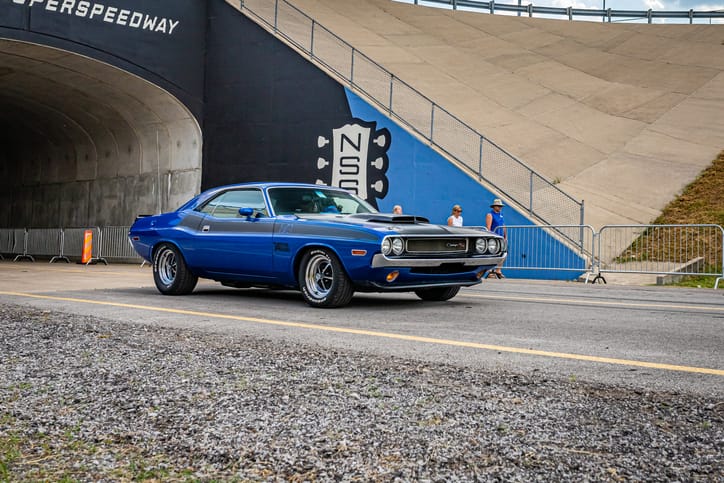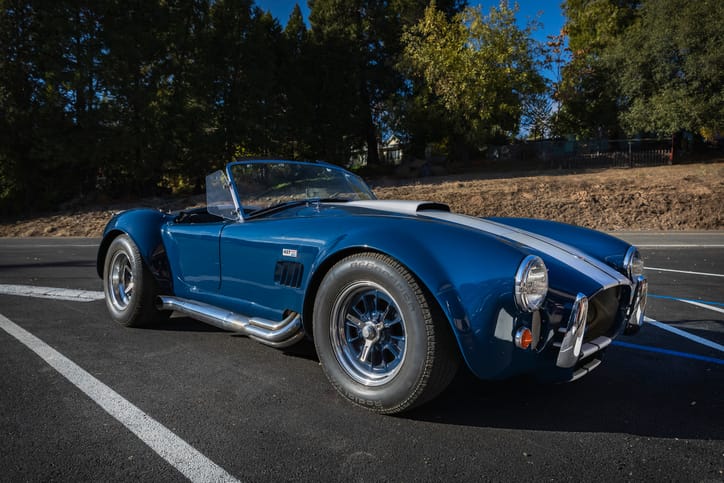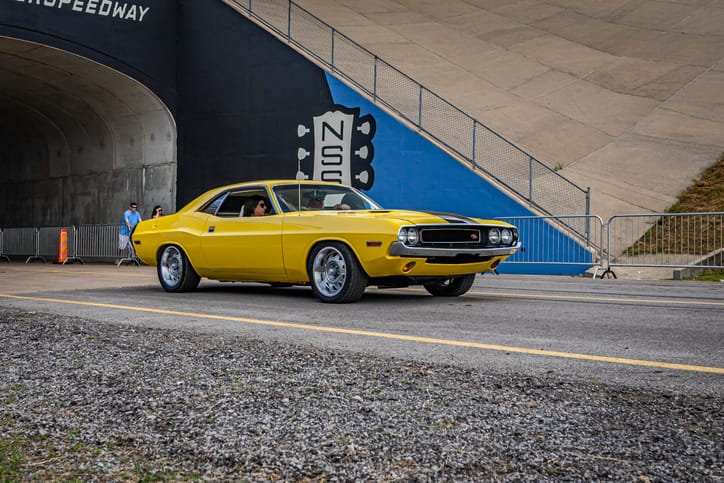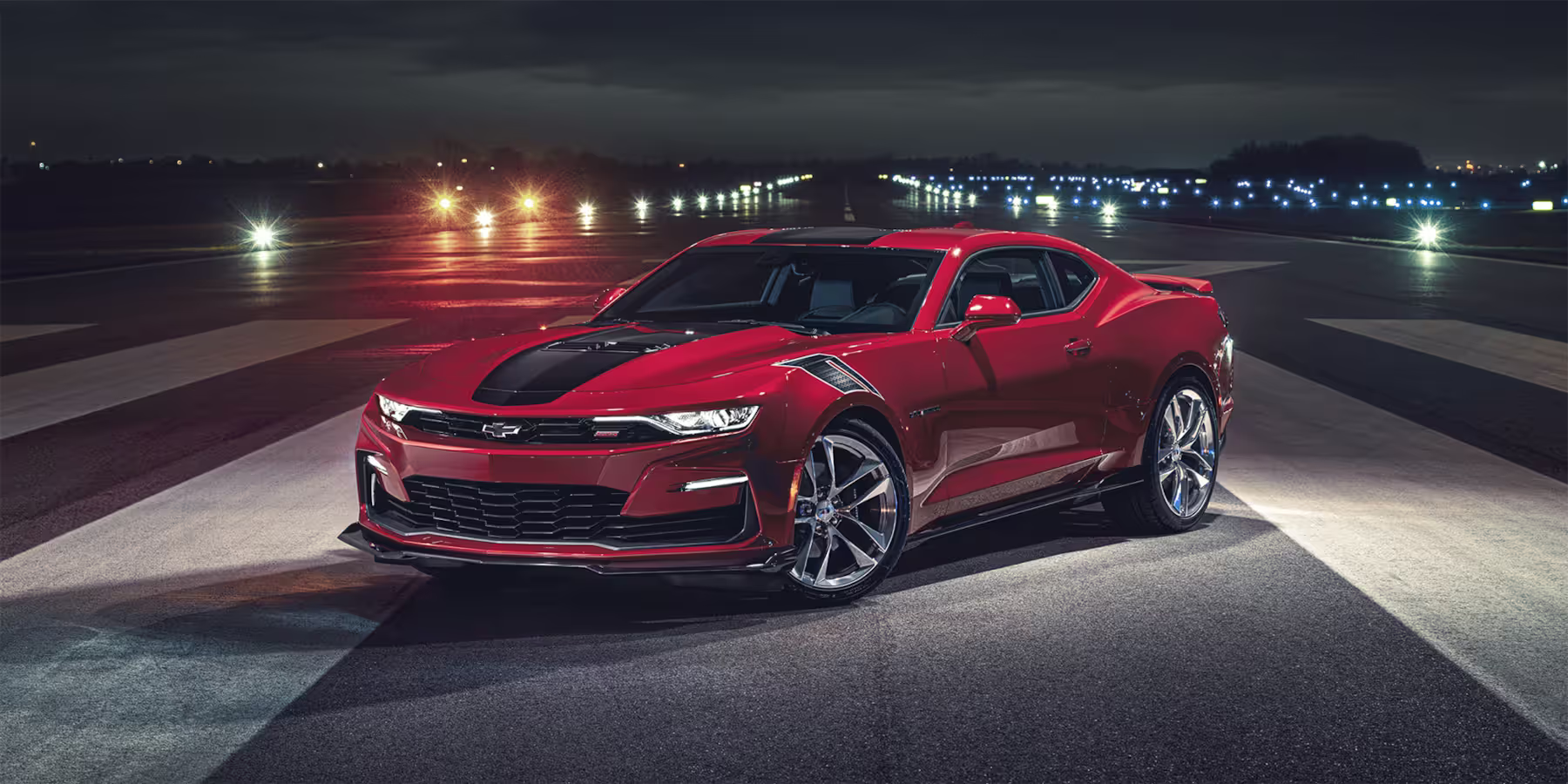Classic Muscle vs. Modern Muscle: A Symphony of Differences

The rumble of a muscle car engine is more than just noise – it's a visceral experience, a mechanical serenade that stirs the soul of car enthusiasts. But listen closely, and you'll hear a distinct difference between the roar of a classic muscle car and the growl of its modern counterpart. This article delves into the world of muscle car acoustics, exploring the factors that contribute to the iconic sound of classic cars and how they differ from the soundscapes of modern muscle.
The Raw Power of Classics: A Less Muffled Melody
The golden age of muscle cars, roughly from the mid-1960s to the early 1970s, was a time of unbridled horsepower and a focus on pure driving pleasure. Cars like the 1968 Ford Mustang Boss 429 and the 1970 Chevrolet Chevelle SS 454 packed enormous V8 engines with minimal exhaust restrictions. These engines breathed freely, resulting in a loud, throaty exhaust note characterized by pops, crackles, and a deep, resonating rumble.
Several factors contributed to this distinctive sound.
- Larger Engine Displacement: Classic muscle cars boasted massive engines, often exceeding 400 cubic inches (6.6 liters) in displacement. This larger size translated into a naturally lower exhaust frequency, creating a deeper, richer sound.
- Simpler Exhaust Systems: Exhaust systems in classic muscle cars were generally less complex than their modern counterparts. They often lacked catalytic converters and mufflers with intricate baffling, allowing for a more direct and unadulterated exhaust note.
- Less Emphasis on Noise Regulations: Environmental regulations and noise restrictions were less stringent in the classic muscle car era. This allowed manufacturers to prioritize performance over sound dampening, resulting in a louder and more aggressive exhaust.
The result? An unfiltered auditory experience that conveyed the raw power and unrefined character of these iconic machines.
Modern Muscle: A Refined Roar with Environmental Considerations
Modern muscle cars carry the torch of performance, but their soundscapes reflect the evolution of automotive technology and environmental concerns. Cars like the Dodge Challenger Hellcat and the Chevrolet Camaro ZL1 offer incredible power, often exceeding 700 horsepower, but their exhaust notes are demonstrably different from their classic predecessors. Here's why:
- Smaller, More Efficient Engines: Modern muscle cars often utilize smaller, turbocharged engines that deliver impressive power while maintaining fuel efficiency. These smaller engines naturally produce a higher-pitched exhaust note compared to the deep rumble of classic V8s.
- Sophisticated Exhaust Systems: Modern exhaust systems are intricate labyrinths of pipes, mufflers, and resonators designed to optimize performance while minimizing noise. Catalytic converters play a crucial role in reducing emissions, but they also dampen the exhaust note significantly.
- Stricter Noise Regulations: Modern muscle cars must adhere to stricter noise emission regulations. This translates to the use of sophisticated exhaust systems that not only reduce emissions but also control sound levels, resulting in a more muted and controlled exhaust note.
The Beauty is in the Details: Examples of Iconic Sounds
The specific sounds of classic and modern muscle cars are as unique as the cars themselves. Let's explore some legendary examples:
- 1967 Shelby Cobra 427: Imagine a lion's roar mixed with the crackle of a fireplace. The side-exit exhaust of the Cobra 427, powered by a monstrous 427ci V8, produced a ferocious snarl that sent shivers down spines.

- 1970 Dodge Challenger R/T: This iconic Mopar muscle car, with its rumbling 440ci V8, had a throaty exhaust note that exemplified the classic muscle car sound. It was a deep, bassy growl that resonated with raw power.

- 2023 Dodge Challenger Hellcat Redeye: Modern muscle doesn't lack auditory drama. The Hellcat Redeye's supercharged 6.2L V8, with its active exhaust system, produces a deep, throaty growl that intensifies with acceleration. It's a more refined and controlled sound, but still undeniably powerful.

- 2024 Chevrolet Camaro ZL1 1LE: This track-focused Camaro boasts a high-revving 6.2L supercharged V8. The exhaust note is a high-pitched snarl that screams performance. It's a different sound from classic muscle, but no less exhilarating.

Beyond the Roar: A Matter of Preference
The debate over classic vs. modern muscle car sound is a subjective one. Some enthusiasts cherish the raw, unfiltered symphony of classic muscle, while others appreciate the refined and controlled growl of modern machines.
Ultimately, the choice comes down to personal preference. Do you crave the visceral experience of a classic muscle car, a sound that transports you back to a simpler, louder time? The pops and crackles as it decelerates, the deep rumble at idle, and the explosive roar under acceleration create an undeniable emotional connection.
Or perhaps you find the sophisticated snarl of a modern muscle car more appealing? The precise engineering behind the exhaust system, the subtle burbles and pops on gear changes, and the controlled but powerful roar at full throttle paint a picture of modern automotive excellence.
There's no right or wrong answer. Both eras of muscle cars offer unique and captivating soundscapes that celebrate the spirit of American performance.
The Future of Muscle Car Melodies
The muscle car story continues to evolve. As technology advances, manufacturers face the challenge of balancing ever-increasing performance with stricter environmental regulations.
Will future muscle cars retain the roar we associate with the genre, or will electric or hybrid powertrains usher in a new era of silent speed?
Only time will tell. But one thing is certain: the quest for exhilarating performance and the desire to create a stirring auditory experience will continue to drive the evolution of muscle car sound.
The Final Note: A Celebration of Muscle Car Music
Classic and modern muscle cars, despite their sonic differences, share a common thread – a celebration of automotive power and driving passion. Their sounds are more than just noise; they are testaments to a rich automotive heritage, a symphony of engineering prowess, and a reminder of the pure joy of driving. So, whether you prefer the raw rumble of a classic or the refined roar of a modern machine, crank up the volume and enjoy the music of muscle cars.
